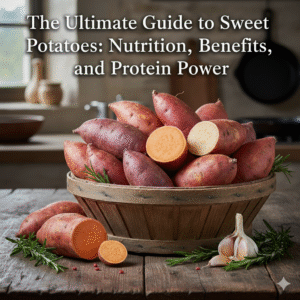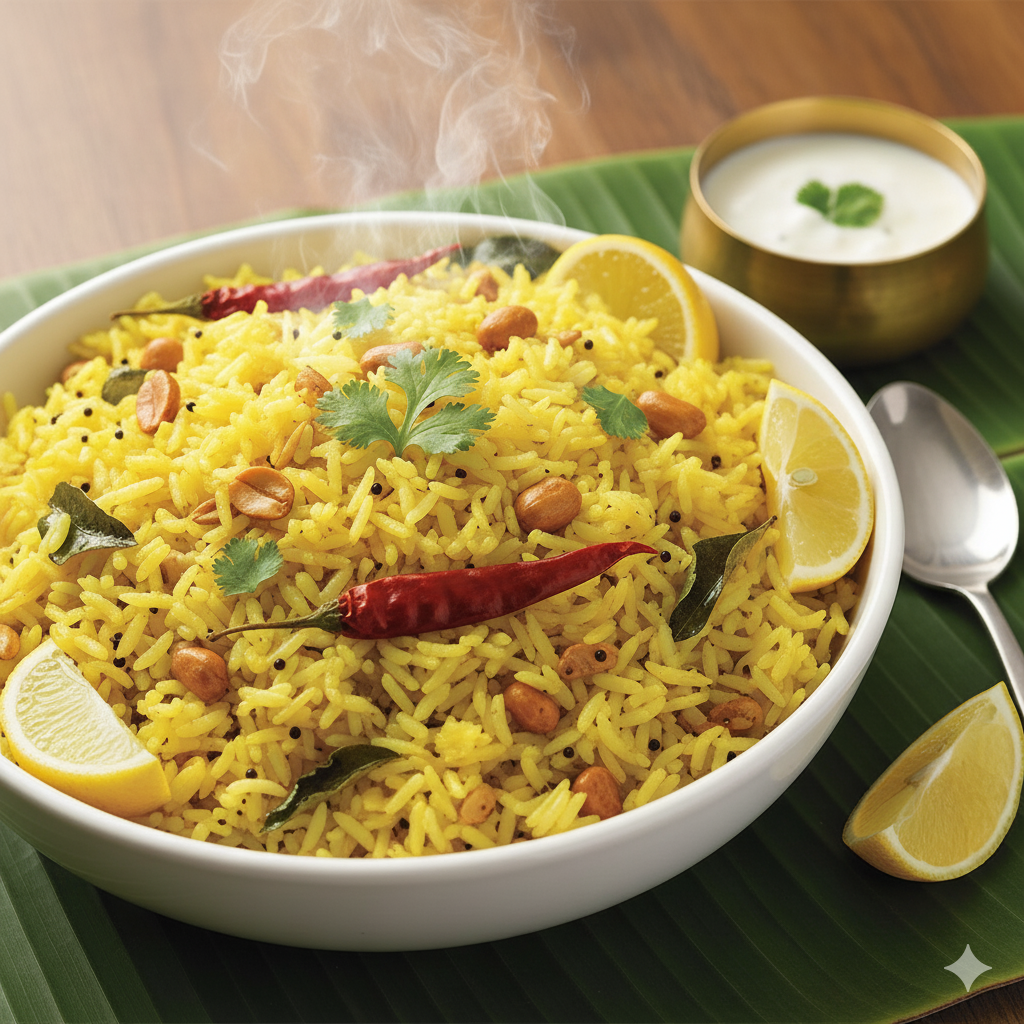The Ultimate Guide to Sweet Potatoes: Nutrition, Benefits, and Protein Power
Table of Contents

Sweet potatoes are more than just a delicious side dish at your Thanksgiving table. These vibrant, nutrient-packed tubers are a powerhouse of health benefits, offering versatility in the kitchen and a surprising amount of sweet potato protein for a plant-based food. In this comprehensive guide, we’ll dive into the world of sweet potatoes, exploring their nutritional profile, the incredible sweet potato benefits, and how their protein content can support a balanced diet. Whether you’re a fitness enthusiast, a health-conscious eater, or simply curious about this humble root vegetable, this blog post will uncover why sweet potatoes deserve a starring role in your meals.
Note: As per your request, AI-generated images of sweet potatoes can enhance this blog. Please confirm if you’d like me to provide prompts for generating images (e.g., vibrant sweet potato dishes, close-ups of raw sweet potatoes, or cooked recipes) to accompany this post.
What Are Sweet Potatoes?
Sweet potatoes (Ipomoea batatas) are root vegetables native to Central and South America, cultivated for thousands of years. They come in various colors—orange, purple, yellow, and white—each with unique flavors and nutritional profiles. Unlike regular potatoes, which belong to the nightshade family, sweet potatoes are part of the morning glory family, offering a naturally sweet taste and a creamy texture when cooked.
Their versatility makes them a global favorite, from mashed sweet potato dishes in the United States to roasted yams in Africa and Asia. But beyond their culinary appeal, sweet potatoes are celebrated for their health benefits, making them a staple in diets focused on wellness and nutrition.
A Brief History of Sweet Potatoes
Sweet potatoes have a rich history. Archaeological evidence suggests they were domesticated over 5,000 years ago in South America. By the time Christopher Columbus reached the Americas, sweet potatoes were a dietary staple. They spread across the globe, becoming integral to cuisines in Africa, Asia, and beyond. Today, they’re a beloved ingredient in both traditional and modern recipes, prized for their flavor and sweet potato benefits.
Nutritional Profile of Sweet Potatoes
One of the primary reasons sweet potatoes are so popular is their impressive nutritional content. A medium-sized sweet potato (about 130 grams, baked with skin) provides:
Calories: 103 kcal
Carbohydrates: 24 grams (including 4 grams of fiber)
Protein: 2.3 grams
Fat: 0.2 grams
Vitamin A: 769% of the Daily Value (DV)
Vitamin C: 22% of the DV
Manganese: 24% of the DV
Vitamin B6: 17% of the DV
Potassium: 12% of the DV
Antioxidants: Beta-carotene, anthocyanins (in purple varieties), and chlorogenic acid
This nutrient density makes sweet potatoes a fantastic addition to any diet, offering a balance of macronutrients and micronutrients. Let’s explore how these nutrients translate into sweet potato benefits.
Sweet Potato Benefits: Why They’re a Superfood
The sweet potato benefits are numerous, making them a true superfood. Here’s a deep dive into why you should include sweet potatoes in your diet.
1. Rich in Antioxidants for Cellular Health
Sweet potatoes, especially orange and purple varieties, are loaded with antioxidants like beta-carotene, anthocyanins, and vitamin C. These compounds combat oxidative stress, reducing the risk of chronic diseases such as heart disease and cancer. Beta-carotene, which gives orange sweet potatoes their vibrant hue, is converted into vitamin A in the body, supporting eye health, immune function, and skin integrity.
Purple sweet potatoes are particularly rich in anthocyanins, the same antioxidants found in blueberries. Studies suggest anthocyanins may reduce inflammation and protect against age-related cognitive decline.
2. Supports Digestive Health
With about 4 grams of fiber per medium sweet potato, these tubers promote healthy digestion. Fiber aids in regular bowel movements, prevents constipation, and supports a healthy gut microbiome by acting as a prebiotic. The high fiber content also helps you feel full longer, making sweet potatoes a great choice for weight management.
3. Boosts Immune Function
The high vitamin A and C content in sweet potatoes strengthens the immune system. Vitamin A maintains the integrity of mucous membranes, the body’s first line of defense against pathogens. Vitamin C, meanwhile, supports white blood cell production and acts as an antioxidant to protect immune cells from damage.
4. Promotes Heart Health
Sweet potatoes are a heart-healthy food thanks to their potassium, fiber, and antioxidant content. Potassium helps regulate blood pressure by counteracting the effects of sodium, while fiber can lower LDL (“bad”) cholesterol levels. The antioxidants in sweet potatoes also reduce inflammation, a key factor in cardiovascular health.
5. Stabilizes Blood Sugar Levels
Despite their sweet taste, sweet potatoes have a low to medium glycemic index (GI), meaning they cause a gradual rise in blood sugar compared to refined carbohydrates. The fiber and complex carbohydrates in sweet potatoes provide sustained energy, making them an excellent choice for people with diabetes or those aiming to maintain stable blood sugar levels.
6. Enhances Skin and Hair Health
The beta-carotene and vitamin C in sweet potatoes promote healthy skin and hair. Vitamin A supports cell turnover, keeping skin radiant, while vitamin C boosts collagen production, improving skin elasticity. Antioxidants also protect against UV damage and premature aging.
7. Supports Eye Health
The high vitamin A content in sweet potatoes is crucial for vision health. A deficiency in vitamin A can lead to night blindness and other eye issues. Regular consumption of sweet potatoes can help maintain optimal vision, especially in low-light conditions.
Sweet Potato Protein: A Surprising Plant-Based Source
While sweet potatoes are primarily known for their carbohydrates and vitamins, they also contain a modest amount of protein. Let’s explore the role of sweet potato protein in a balanced diet.
How Much Protein Do Sweet Potatoes Provide?
A medium sweet potato contains about 2.3 grams of protein, which is modest compared to animal-based sources like chicken or eggs. However, for a starchy vegetable, this is significant. The protein in sweet potatoes is primarily composed of storage proteins called sporamins, which make up about 80% of the total protein content.
Sporamins are unique because they not only serve as a nutrient source but also have antioxidant properties. They help protect the sweet potato plant from damage and may offer similar protective benefits when consumed by humans.
Is Sweet Potato Protein Complete?
Proteins are made up of amino acids, and a “complete” protein contains all nine essential amino acids in adequate amounts. Sweet potato protein is not considered complete, as it is low in certain essential amino acids like lysine. However, you can easily complement sweet potato protein by pairing it with other plant-based protein sources, such as:
Legumes: Beans, lentils, or chickpeas provide lysine, making them an excellent pairing.
Nuts and Seeds: Almonds, chia seeds, or hemp seeds add protein and healthy fats.
Grains: Quinoa, brown rice, or whole wheat can round out the amino acid profile.
For example, a meal of sweet potato and black bean tacos or a sweet potato bowl with quinoa and tahini sauce can create a complete protein profile, ideal for vegetarians and vegans.
Who Can Benefit from Sweet Potato Protein?
While sweet potato protein alone won’t meet your daily protein needs, it’s a valuable addition for:
Vegetarians and Vegans: Combining sweet potatoes with other plant-based proteins helps meet protein requirements without relying on animal products.
Athletes: The carbohydrates in sweet potatoes provide energy for workouts, while the protein supports muscle recovery.
Weight-Conscious Individuals: The fiber and protein in sweet potatoes promote satiety, helping control appetite.
Creative Ways to Enjoy Sweet Potatoes
The versatility of sweet potatoes makes them a fantastic ingredient for countless dishes. Here are some ideas to incorporate sweet potatoes into your diet:
1. Savory Dishes
Roasted Sweet Potatoes: Toss cubed sweet potatoes with olive oil, rosemary, and garlic, then roast at 400°F (200°C) for 25–30 minutes.
Sweet Potato Fries: Slice into wedges, season with paprika and cumin, and bake for a crispy, healthy alternative to regular fries.
Sweet Potato Soup: Blend boiled sweet potatoes with vegetable broth, coconut milk, and spices for a creamy, comforting soup.
2. Sweet Treats
Sweet Potato Pie: A classic dessert made with mashed sweet potatoes, cinnamon, nutmeg, and a flaky crust.
Sweet Potato Brownies: Blend sweet potatoes with cocoa powder, almond butter, and maple syrup for a fudgy, guilt-free treat.
3. Breakfast Options

Sweet Potato Toast: Slice sweet potatoes thinly, bake until tender, and top with avocado, eggs, or almond butter.
Sweet Potato Pancakes: Mix mashed sweet potatoes into pancake batter for a nutrient-packed breakfast.
4. Global Inspirations
African Sweet Potato Stew: Combine sweet potatoes with peanuts, tomatoes, and spices for a hearty West African dish.
Japanese Sweet Potato Snacks: Roast purple sweet potatoes for a naturally sweet, chewy snack popular in Japan.
AI Image Prompt Idea: “A vibrant plate of roasted sweet potato cubes garnished with fresh rosemary and sea salt, set against a rustic wooden table with a warm, cozy kitchen background.”
Sweet Potatoes vs. Regular Potatoes: A Nutritional Comparison
How do sweet potatoes stack up against regular white potatoes? Here’s a quick comparison:
Nutrient (per 130g, baked) | Sweet Potato | White Potato |
|---|---|---|
Calories | 103 kcal | 120 kcal |
Protein | 2.3 g | 2.7 g |
Fiber | 4 g | 2.4 g |
Vitamin A | 769% DV | 0% DV |
Vitamin C | 22% DV | 12% DV |
Glycemic Index | 44–61 | 60–89 |
While both are nutritious, sweet potatoes edge out with higher fiber, vitamin A, and a lower glycemic index, making them a better choice for blood sugar control and antioxidant intake.
Potential Downsides of Sweet Potatoes
While sweet potato benefits are abundant, there are a few considerations:
Oxalates: Sweet potatoes contain oxalates, which may contribute to kidney stone formation in susceptible individuals. If you’re prone to kidney stones, consult a healthcare provider.
Portion Control: Their natural sweetness can lead to overeating, especially in sugary recipes like pies or casseroles. Stick to moderate portions to balance calorie intake.
Allergies: Though rare, some individuals may be allergic to sweet potatoes. Watch for symptoms like itching or swelling after consumption.
Tips for Choosing and Storing Sweet Potatoes
To maximize the sweet potato benefits, follow these tips:
Selection: Choose firm sweet potatoes with smooth, unblemished skin. Avoid those with soft spots or sprouts.
Storage: Store in a cool, dark, well-ventilated place (not the fridge) for up to a month. Refrigeration can alter their texture and flavor.
Preparation: Scrub thoroughly before cooking, and keep the skin on for extra fiber and nutrients.
Conclusion: Why Sweet Potatoes Should Be Your Go-To Superfood
From their vibrant colors to their impressive nutritional profile, sweet potatoes are a versatile and delicious way to boost your health. The sweet potato benefits—ranging from improved digestion to enhanced immune function—make them a must-have in any diet. Plus, their sweet potato protein content adds a surprising plant-based protein boost, especially when paired with complementary foods like legumes or grains.
Whether you’re roasting them for a savory side, blending them into a smoothie, or baking them into a dessert, sweet potatoes offer endless culinary possibilities. So, the next time you’re planning a meal, consider the humble sweet potato—a nutrient-dense, flavorful superfood that delivers on both taste and health.
AI Image Prompt Idea: “A colorful array of sweet potato dishes, including roasted sweet potatoes, a slice of sweet potato pie, and sweet potato fries, arranged on a bright, modern kitchen counter with fresh herbs and spices in the background.”


